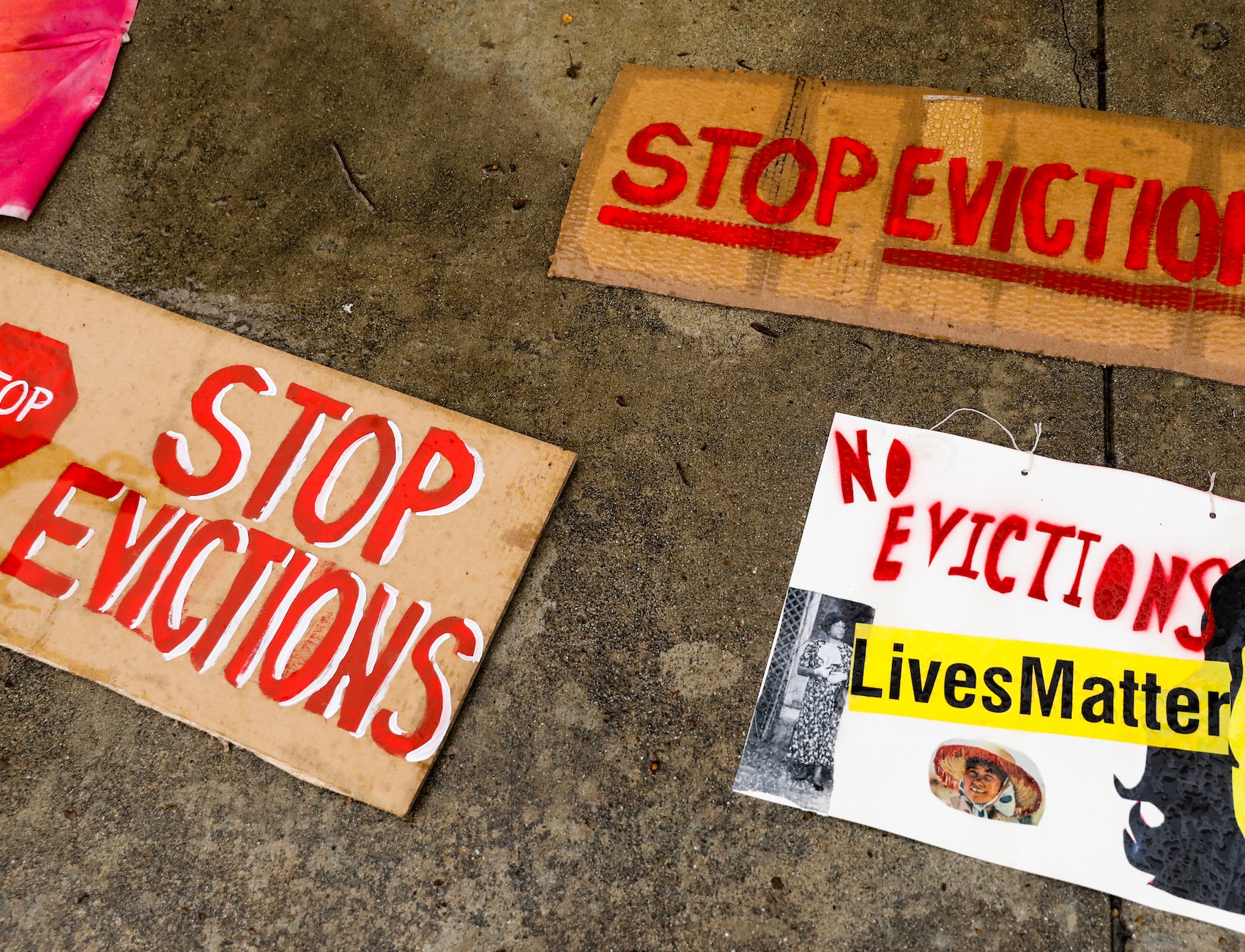Eviction Bans Saved Lives During The Pandemic, New Research Says
Policies that helped keep people in their homes—and keep the utilities on—reduced COVID-19 deaths and infections.

A new working paper from researchers at Duke University has found that policies that secured access to housing and utilities like water and electricity played a major role in preventing COVID-19 infections and deaths.
Counties with a moratorium on evictions reduced county-level infections by nearly 4 percent and led to 11 percent fewer deaths, the paper found. And policies that prevented the disconnection of utilities like water and electricity brought infections down by a little more than 4 percent and reduced deaths by more than 7 percent.
“We know from research that not being able to pay your water and electricity is the first signal that a household is headed towards being at risk of eviction,” Kay Jowers, co-author of the paper and senior policy associate at Duke’s Nicholas Institute for Environmental Policy Solutions, told The Appeal.
She noted that in some municipalities, utility cutoffs can act as a de facto eviction because some states and municipalities require running water or other utilities to be active for a home to be deemed inhabitable.
“This shows how important it is to public health that we have access to housing and water and electricity overall,” Jowers said.
Housing insecurity and evictions make it difficult for people to social distance and isolate themselves because they force people to become reliant on living with someone else or rely on using another person’s home or public areas for running water, she said. Lack of running water also makes it more difficult for people to do basic mitigation efforts like proper and frequent handwashing.
This leads to greater infections from increased exposure, which is then compounded as people in the household go out in public to their jobs or shop for necessities.
It is that compounding effect, Jowers said, that constantly and exponentially increases the number of people exposed to COVID-19 who would not have been if people were able to remain in their homes and if they had access to things they need inside the home.
And the effect grows over time. “More infections yesterday means that we’re going to have more infections today,” said Jowers. “More infections in the last two to four weeks, means you’re going to have more deaths today.”
Although the CARES Act, passed by Congress in late March, provided a reprieve on evictions for some people living in federally backed properties, the first national eviction moratorium did not go into effect until September when the Centers for Disease Control and Prevention issued its guidance. Even then, the CDC moratorium only provides protection for people who can’t pay rent because of a financial hardship that happened during the pandemic. State and local governments also implemented their own moratoriums.
Jowers and her colleagues found that if a national moratorium on evictions and utility cutoffs had been implemented at the beginning of the pandemic, the rate of death would have dropped nearly 56 percent compared to if no policies were ever implemented.
A study published in December by Princeton University’s Eviction Lab estimates that national and local eviction moratoriums prevented 1.6 million evictions since March. Despite this, landlords filed evictions against more than 227,000 people from their homes in five states and 27 cities tracked by the Eviction Lab. Last week, more than 4,500 evictions were filed in those areas, and even these numbers are a potential undercount.
Advocates across the country have been pushing local, state, and federal officials to protect people from evictions during the pandemic. In Philadelphia, advocates set up two encampments in public parks and moved people into unused public housing units. Other groups have formed renters’ unions and even physically blocked access to courthouses and disrupted proceedings to help prevent people from losing their homes.
More than 25.6 million people have tested positive for COVID-19 as of today, and more than 429,000 people have died from the disease in the United States. For perspective, even a 5 percent reduction in deaths would have meant more than 20,000 fewer deaths.
“The benefits of these policies, it’s not just to the housing insecure or the housing precarious,” Jowers said. “It’s to us all.”
